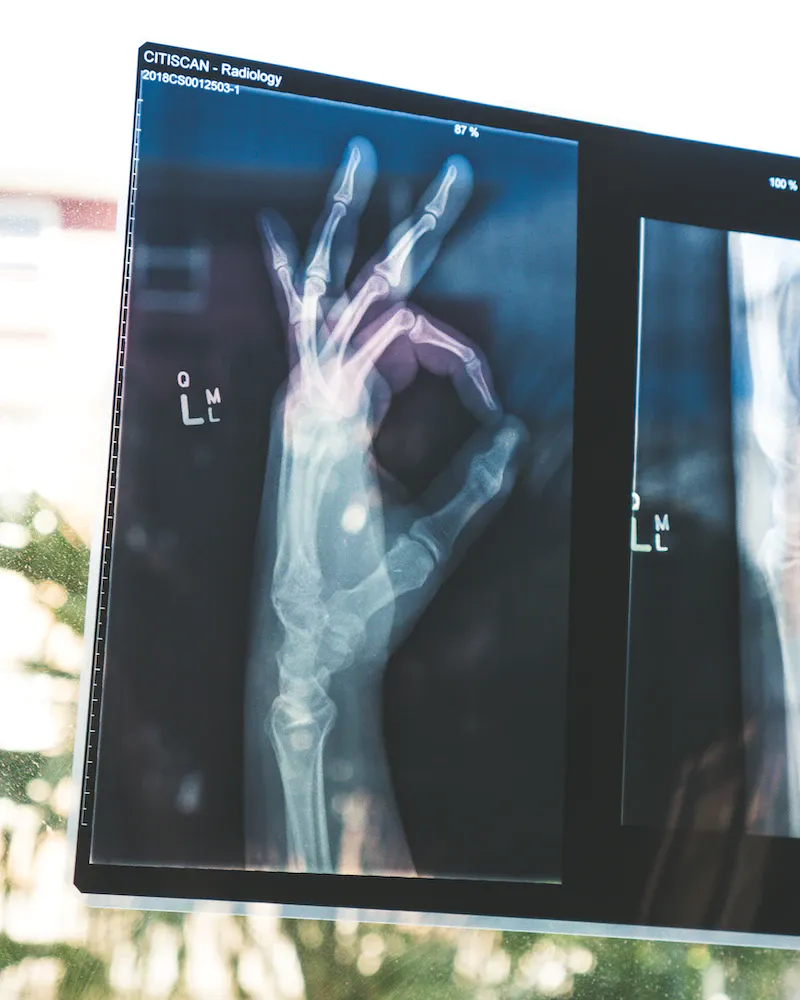Unlocking the Secrets of Pelvic Pain: A Journey to Giving power and Sexual Wellness

From Northopedic Therapist to Sex Mechanic: A Unique Journey
Many of us have experienced the discomfort and pain that can come with sex, but did you know that there are specialized therapists who work to ease this pain? These therapists, known as pelvic health therapists, are experts in treating issues around the spine, hip, pelvis, and core to help people have better sex.
As the speaker in the video explains, she has been working as a pelvic health therapist for 23 years, but most people have no idea what that entails. She shares her personal journey of how she became interested in this field and the challenges she faced along the way. Her story is a unique one, as she went from treating broken leg bones to focusing on people’s private parts.
The speaker explains that painful sex can often be a muscle issue and how she discovered the connection between the tailbone and pelvic floor muscles. Through her own personal struggle with chronic vaginal pain, she gained firsthand experience of what her patients were going through. She learned to treat herself and in doing so, developed a holistic approach to treating genital pain.
Her journey led her to understand that the body is one big system, and the organs, muscles, and nervous system are all interconnected. By reducing tension in the core and pelvic floor muscles, people can not only improve their sex lives but also resolve other areas of pain and stiffness.
The speaker’s story highlights the importance of seeking specialized care when it comes to pelvic health issues. If you are experiencing pain with sex or have other pelvic pain concerns, consulting with a pelvic health therapist could be invaluable in improving your quality of life.
The Surprising Link Between Muscle Pain and Painful Sex
Did you know that pelvic pain during sex can be caused by tight muscles? As Hina, a pelvic health therapist with over 23 years of experience, explains, pain during sex can be a result of tension in the pelvic floor muscles, which attach from the bottom of the spine and tailbone across to both hips and to the front of the pubic bone, giving support to the rectum, the bladder, and the sexual organs. When these muscles are too tight, they can cause pain during sex and even mimic symptoms of other conditions like urinary tract infections or yeast infections.
Hina’s unique approach to pelvic health therapy involves reducing tension in these tight muscles to help ease pain during sex and improve overall pelvic health. She recommends exercises that can help with this, like pelvic floor relaxation techniques, and emphasizes that traditional pelvic floor strengthening exercises, known as Kegels, can actually make pain during sex worse if the muscles are already too tight.
It’s important to note that many healthcare providers may not be familiar with this connection between muscle pain and pelvic health, which is why it’s crucial for patients to advocate for themselves and seek out pelvic health specialists who are trained in this area. Hina’s own personal experience with chronic vaginal pain after giving birth has led her to approach pelvic health therapy holistically, looking at the body as one interconnected system of organs, muscles, and nerves.
By reducing tension in these key muscles and seeking out expert pelvic health therapy, individuals experiencing pelvic pain during sex can find relief and regain the pleasure in their sex lives.
Why Kegels May Make Painful Sex Worse
Kegels are often recommended to improve sexual function, but they can actually make painful sex worse. This is because when pain is involved, it’s often caused by tight pelvic floor muscles. Traditional wisdom suggests that pelvic floor strengthening exercises, aka Kegels, can improve sex. However, in reality, when it comes to pain with sex, Kegels can make things worse. Tight pelvic floor muscles cause a lack of blood flow, which can lead to pain. Therefore, reducing tension in these tight core and pelvic floor muscles can help not only resolve low back and hip pain, but also improve your sex life.
The video explains that the balled-up tight muscles can mimic things like a yeast infection, a urinary tract infection, or prostate pain in men when there’s no infection there. The Milomaneuver, reducing tension in these key muscles, can reduce tension in the tight pelvic floor muscles.
It’s important to note that healthcare providers may not always understand this connection between muscle, pelvic, and genital pain. According to Yale Medicine and the Indian Journal of Urology, it can take 7 to 11 years for people to get any sort of diagnosis or answer to their pelvic and genital pain. Therefore, if you’re experiencing pain with sex, it’s crucial to seek help from a pelvic health therapist who can identify and treat any muscle issues that might be causing the pain.
The Importance of a Holistic Approach to Treating Genital Pain
When it comes to treating genital pain, a holistic approach that considers the physical, emotional, and psychological aspects of the condition is crucial. This means that in addition to addressing physical symptoms, it’s important to also consider factors like stress, anxiety, and emotional trauma that can contribute to or exacerbate the pain.
In the video, the speaker emphasizes the importance of taking a whole-body approach to treating genital pain. This includes addressing any underlying issues that may be contributing to the pain, such as pelvic floor dysfunction or hormonal imbalances, as well as considering how stress and emotional trauma may be impacting the condition.
The speaker also emphasizes the importance of incorporating practices like mindfulness, meditation, and therapy into treatment plans in order to address the emotional and psychological aspects of the condition. By taking a comprehensive approach to treatment, patients are more likely to experience long-term relief from genital pain and other associated symptoms.
It’s important to note that there is no one-size-fits-all approach to treating genital pain. Each patient is unique and requires an individualized treatment plan that takes into account their specific needs and circumstances. A qualified healthcare provider who specializes in the treatment of genital pain can work with patients to develop a holistic treatment plan that is tailored to their individual needs.
How Tight Muscles in the Pelvis Can Mimic Other Conditions
Pelvic floor dysfunction can be a complex and multifaceted issue, and it’s not always easy to identify its root cause. In some cases, the symptoms of tight pelvic floor muscles can mimic other medical conditions, which can make diagnosis even more difficult.
For example, tight muscles in the pelvic floor can cause urinary incontinence, which can be mistakenly diagnosed as an overactive bladder. Tight muscles can also cause pain during bowel movements, leading to a diagnosis of irritable bowel syndrome. Additionally, pain during intercourse can be attributed to vaginal dryness or infection, when it may actually be due to tight muscles.
The key to identifying the root cause of these symptoms is to look at the bigger picture and take a holistic approach to treatment. By assessing a patient’s posture, muscle tone, and emotional state, healthcare professionals can identify the underlying causes of pelvic floor dysfunction and create a personalized treatment plan.
In some cases, physical therapy may be recommended to help relieve tight muscles and improve pelvic floor function. Relaxation techniques, such as deep breathing and mindfulness meditation, can also be helpful in reducing tension in the pelvic muscles.
It’s important to remember that pelvic floor dysfunction is not a one-size-fits-all condition, and there is no single solution that will work for everyone. By taking a holistic approach to treatment and addressing the underlying causes of the condition, healthcare professionals can help patients achieve long-term relief and improve their quality of life.
Why It Can Take Years to Get a Diagnosis for Pelvic Pain
Pelvic pain can be a complex and difficult condition to diagnose, and it’s not uncommon for patients to go years without a proper diagnosis. Here are some reasons why it can take so long to get a diagnosis for pelvic pain:
- Lack of understanding: Pelvic pain is often poorly understood by medical professionals, which can lead to misdiagnosis or a delay in diagnosis. Some healthcare providers may not be aware of the various causes of pelvic pain, or they may dismiss a patient’s pain as being psychosomatic.
- Stigma: Because pelvic pain often involves issues related to sexual health, some patients may feel ashamed or embarrassed to discuss their symptoms with a doctor. This can lead to delayed diagnosis or avoidance of seeking medical care altogether.
- Misdiagnosis: Many conditions can cause pelvic pain, and some of these conditions share similar symptoms. This can lead to misdiagnosis and delayed treatment. For example, endometriosis is often misdiagnosed as Irritable Bowel Syndrome (IBS) or pelvic inflammatory disease (PID).
- Inadequate testing: Some medical tests, such as ultrasounds or CT scans, may not be able to detect the underlying cause of pelvic pain. This can lead to inconclusive test results and a delay in diagnosis.
Getting a proper diagnosis for pelvic pain requires a healthcare provider who is knowledgeable and understanding of the condition. Patients should not be afraid to speak up about their symptoms and advocate for themselves to get the care they need.
Top Five Groups Who Should Consider Pelvic Floor Treatment
Pelvic floor dysfunction is a common issue that affects people of all ages and genders. However, certain groups of people are more likely to experience pelvic pain and other symptoms, and may benefit from pelvic floor treatment. Here are the top five groups who should consider pelvic floor treatment:
- Women who have given birth: Pregnancy and childbirth can cause trauma to the pelvic floor muscles, leading to pain, discomfort, and other symptoms. Pelvic floor treatment can help women recover from childbirth and regain their quality of life.
- People with chronic pain conditions: Conditions like fibromyalgia, chronic fatigue syndrome, and endometriosis can cause chronic pain that can also affect the pelvic floor muscles. Pelvic floor treatment can help manage these symptoms and improve quality of life.
- Athletes: Athletes who engage in high-impact sports like running, gymnastics, and martial arts are at a higher risk of developing pelvic floor dysfunction due to the repetitive stress on the pelvic floor muscles. Pelvic floor treatment can help prevent injuries and improve athletic performance.
- Transgender individuals: Transgender individuals who undergo gender-affirming surgeries may experience changes in their pelvic floor muscles that can cause pain and discomfort. Pelvic floor treatment can help ease these symptoms and improve their quality of life.
- Older adults: As we age, our muscles tend to weaken, including those in the pelvic floor. This can lead to incontinence and other issues. Pelvic floor treatment can help older adults maintain their independence and quality of life.
Pelvic floor dysfunction can be a challenging and frustrating issue, but it is treatable with the right approach. If you are experiencing symptoms like pain, discomfort, or incontinence, consider seeking out pelvic floor treatment to improve your quality of life.
Sex: A Clever Acronym for Reducing Pain and Enabling Yourself
In the context of pelvic pain and painful sex, “Sex” is an acronym for a set of strategies that can help reduce pain and enable individuals dealing with these issues. The acronym stands for:
Strength trainingEducation and giving powerXercising your brain Breathing Techniques
Here’s a closer look at what each of these components involves:
Strength training: Building strength in the pelvic floor muscles can help reduce pain and improve sexual function. This may involve exercises such as Kegels, as well as other targeted exercises prescribed by a pelvic floor physical therapist.
Education and giving power: Learning about your body and your condition can help you feel more in control and confident about managing your symptoms. This may involve seeking out educational resources, such as books or websites, and working with a healthcare provider who takes the time to explain your condition and treatment options.
Xercising your brain: Chronic pain can be exhausting and emotionally draining. Engaging in activities that help promote mental wellness, such as meditation or therapy, can help reduce stress and improve quality of life.
Breathing techniques: Deep breathing and relaxation techniques can help reduce muscle tension and promote relaxation. This can be especially helpful during sexual activity, which may be a source of anxiety and tension for individuals dealing with pelvic pain.
By incorporating these strategies into your treatment plan, you can take an active role in managing your symptoms and improving your quality of life. However, it’s important to work with a healthcare provider who specializes in pelvic pain and can provide personalized recommendations for your specific needs.
Conclusion
Pelvic pain can be a difficult and frustrating condition to live with, but there are solutions available. From muscle pain to painful sex, there are a variety of reasons why someone might experience pelvic pain. It’s important to seek out a qualified medical professional who can help diagnose and treat the underlying cause of the pain.
In many cases, pelvic floor therapy can be an effective treatment option. This approach involves working with a therapist who specializes in pelvic floor muscles to ease pain and improve function. Additionally, there are other lifestyle changes that can be made to reduce symptoms of pelvic pain, such as stress management techniques, exercise, and healthy eating habits.
The “SEX” acronym is a helpful tool for those who experience pelvic pain. It stands for “self-education,” “exercise,” “x-rays and ultrasounds,” and “treatment options.” By following these steps, individuals can take an active role in their own healthcare and work towards reducing their pelvic pain.
It’s important to note that getting a diagnosis for pelvic pain can often be a long and frustrating process. However, it’s important to persist and advocate for oneself in order to find the right treatment plan. By seeking out a holistic approach to pelvic pain treatment and being an active participant in one’s own healthcare, it’s possible to manage and reduce symptoms of this condition.
Overall, it’s important for individuals experiencing pelvic pain to know that they are not alone and that there are resources and treatment options available. With the right approach, it’s possible to live a full and pain-free life.




